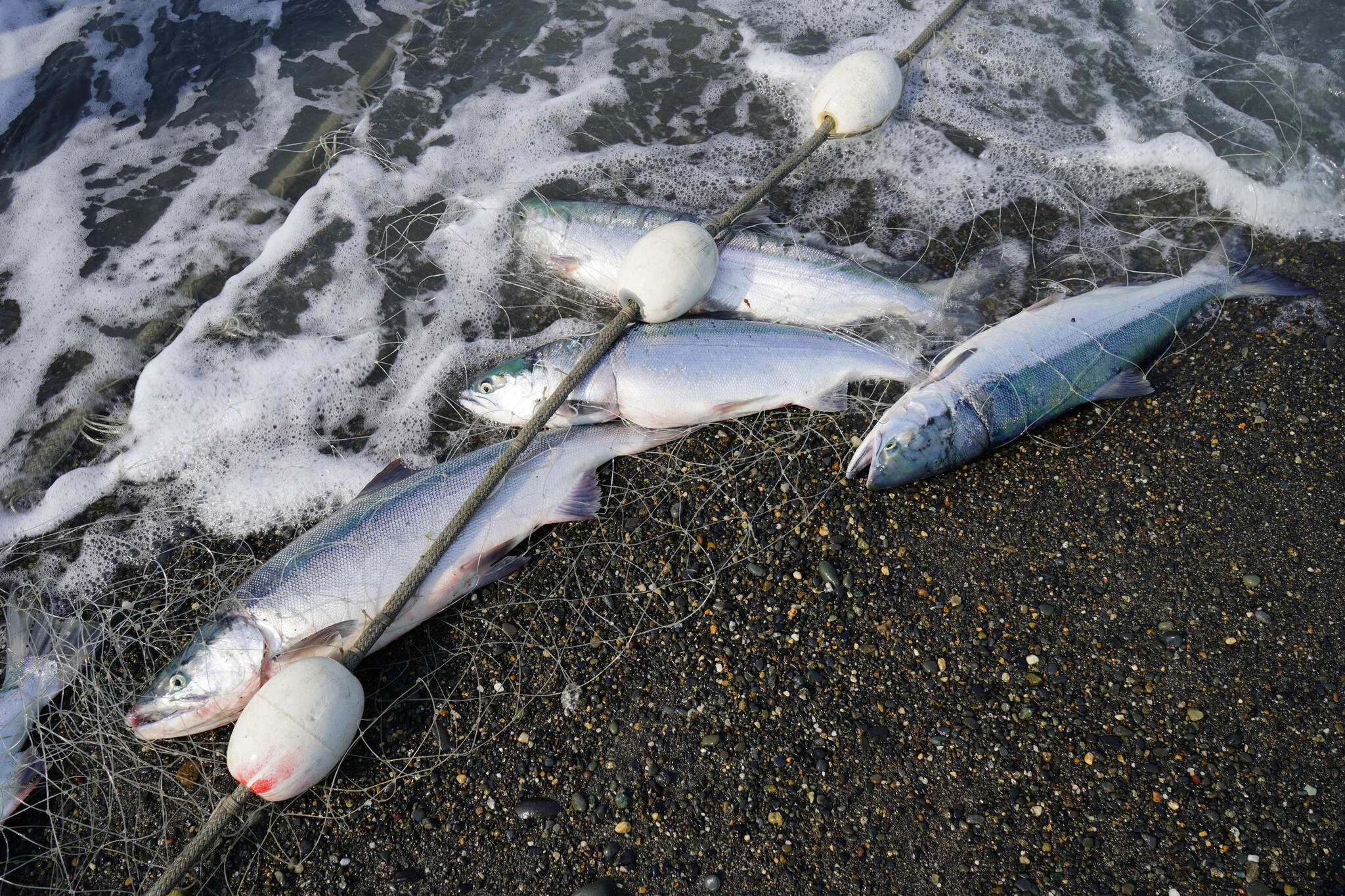A draft spend plan was published Tuesday, July 9 by the State Department of Fish and Game for the allocation of around $11.5 million in federal funds in response to a disaster determination for the 2021 and 2022 Upper Cook Inlet east side setnet fisheries.
A public notice from the department says that the National Marine Fisheries Service allocated $11,484,675 to address losses from the 2021 and 2022 fisheries. The U.S. Secretary of Commerce made the disaster determination in April, responding to an October request from Gov. Mike Dunleavy.
The draft spend plan of those dollars by the department says that funds will be disbursed to achieve two objectives: to assist fishery participants harmed by the disasters and to improve fishery information to avoid or mitigate the impacts of future disasters.
The draft plan says that 62% of the money, around $7 million, will be dispersed to harvesters. Around $3 million will go to processors, $1 million to research, $300,000 to communities and $11,000 for program support.
The percent share for each beneficiary group matches the totals described in the final spend plan for the 2018 Upper Cook Inlet east side setnet fishery disaster and 2020 Upper Cook Inlet salmon fishery disasters. That plan, for disbursement of $9.3 million, was initially drafted in June 2023, finalized Sept. 6 and forwarded to the Pacific States Marine Fisheries Commission on Sept. 11. Funds still have not been distributed by the commission.
A disaster determination was also made by the secretary of commerce for the 2023 Upper Cook Inlet east side setnet salmon fishery in June. The National Marine Fisheries Service hasn’t yet allocated funds for that disaster.
The ESSN has faced significant restrictions in recent years to protect king salmon. Those restrictions culminated in a complete season closure announced months before their scheduled start in 2023. This year, the fishery is again entirely closed, but some openings have been allowed with dipnets — which received approval by the State Board of Fisheries and emergency approval by the Commercial Fisheries Entry Commission. According to preliminary inseason harvest estimates from the department on July 11, only around 1,000 sockeye had been harvested in the ESSN — which is only using the dipnets — since the first opening on June 20. Central District drift gillnet fisheries in Cook Inlet’s state and federal waters, for comparison, harvested more than 150,000 sockeye in the same period.
Public comment will be accepted for the 2021 and 2022 Upper Cook Inlet East Side Set Gillnet Salmon Fisheries Disaster Initial Draft Spend Plan until July 24. Comments can be submitted by email to dfg.com.fisheriesdisaster@alaska.gov. The draft plan can be found at either adfg.alaska.gov or in Alaska’s Online Public Notices.
Reach reporter Jake Dye at jacob.dye@peninsulaclarion.com.


